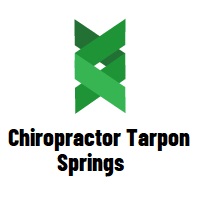
Can Chiropractic Care Help Scoliosis?
Chiropractic Care and Scoliosis: A Comprehensive Overview
Scoliosis, a condition characterized by a lateral curvature of the spine, affects millions of individuals worldwide. This curvature often resembles an “S” or “C” shape and can vary in severity from mild to severe. Understanding the nature of scoliosis and its management through chiropractic care is crucial for patients seeking relief from associated symptoms and improved spinal health.
Understanding Scoliosis
Scoliosis can manifest during growth, known as adolescent idiopathic scoliosis, or result from other factors such as congenital abnormalities, neuromuscular conditions, or degenerative changes in adults. Symptoms commonly include back pain, uneven shoulders, and an asymmetrical waistline. Diagnosis typically involves physical examination, imaging tests like X-rays, and monitoring the progression of the curvature over time.
Chiropractic Approach to Scoliosis
Chiropractors specialize in the musculoskeletal system, focusing on restoring proper spinal alignment and function to promote overall health. Their approach to scoliosis management includes:
- Spinal Adjustments: Chiropractors employ gentle, controlled force to manipulate the spine, aiming to reduce spinal misalignments (subluxations) and improve nerve function. These adjustments can help alleviate discomfort associated with scoliosis and promote better spinal alignment.
- Postural Correction: Assessment of posture is integral to chiropractic care for scoliosis. Chiropractors recommend specific exercises to strengthen core muscles and maintain better alignment, which can help slow the progression of curvature.
- Lifestyle Guidance: Patients receive personalized advice on ergonomic principles, exercise routines, and nutrition to support spinal health and overall well-being.
- Breathing Techniques: Proper breathing techniques are emphasized in chiropractic care for scoliosis, as they can enhance lung capacity and provide support to the spinal structures.
- Pain Management: Chiropractic interventions may offer relief from pain associated with scoliosis, providing patients with non-invasive alternatives to traditional pain management approaches.
Evidence and Controversies
Research examining the efficacy of chiropractic care for scoliosis yields mixed results. While some studies suggest that chiropractic adjustments can improve spinal curvature and reduce associated pain, others argue that the evidence is inconclusive or limited. Controversies surrounding chiropractic care for scoliosis arise due to variations in research methodologies and individual responses to treatment.
Patient-Centered Approach
Chiropractors adopt a patient-centered approach to scoliosis management, tailoring treatment plans to each individual’s unique needs and preferences. Regular visits are essential for ongoing monitoring and adjustment of treatment strategies. Collaboration with other healthcare providers, such as orthopedists and physical therapists, is crucial to ensure comprehensive care and optimal outcomes for patients with scoliosis.
When to Seek Chiropractic Care
Chiropractic care may be beneficial for individuals with mild to moderate scoliosis cases without severe complications. However, patients with severe curvature or those requiring surgical intervention may not experience significant benefits from chiropractic adjustments alone. It is essential for patients to consult both a chiropractor and a medical doctor to determine the most suitable approach for managing their scoliosis.
Safety and Precautions
Chiropractic care is generally considered safe when administered by qualified practitioners. However, patients should communicate openly about their condition and medical history to ensure appropriate treatment. Choosing a chiropractor with experience in treating scoliosis is paramount to achieving favorable outcomes. Patients should also report any adverse effects promptly to their healthcare provider for timely intervention.
Conclusion
Chiropractic care offers a holistic approach to managing scoliosis, focusing on spinal alignment, pain relief, and overall well-being. While evidence supporting its efficacy may vary, many individuals find relief from symptoms and improved quality of life through chiropractic interventions. By adopting a patient-centered approach and collaborating with other healthcare providers, chiropractors play a vital role in supporting individuals with scoliosis on their journey toward better spinal health and function.


